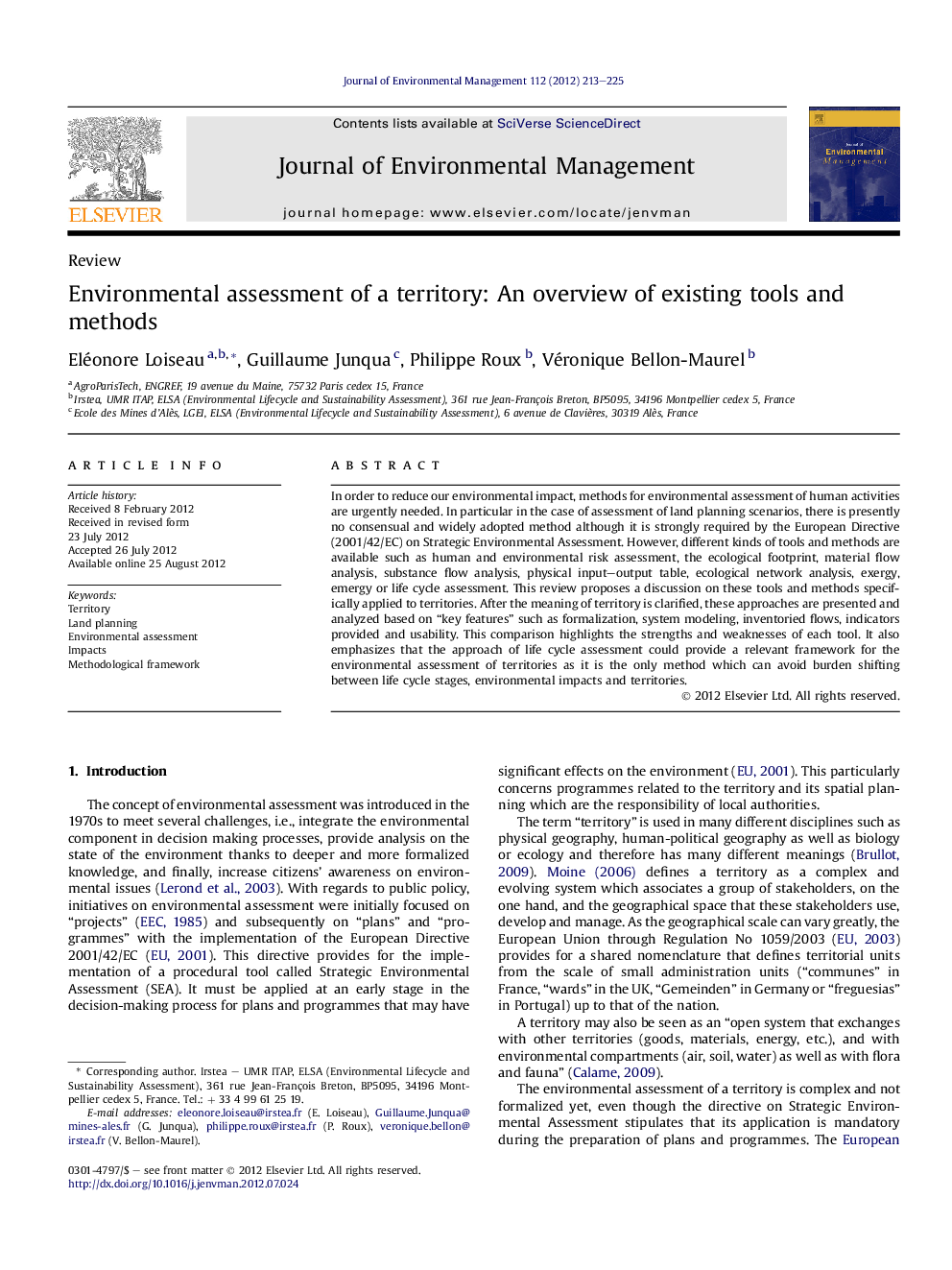| Article ID | Journal | Published Year | Pages | File Type |
|---|---|---|---|---|
| 1056425 | Journal of Environmental Management | 2012 | 13 Pages |
In order to reduce our environmental impact, methods for environmental assessment of human activities are urgently needed. In particular in the case of assessment of land planning scenarios, there is presently no consensual and widely adopted method although it is strongly required by the European Directive (2001/42/EC) on Strategic Environmental Assessment. However, different kinds of tools and methods are available such as human and environmental risk assessment, the ecological footprint, material flow analysis, substance flow analysis, physical input–output table, ecological network analysis, exergy, emergy or life cycle assessment. This review proposes a discussion on these tools and methods specifically applied to territories. After the meaning of territory is clarified, these approaches are presented and analyzed based on “key features” such as formalization, system modeling, inventoried flows, indicators provided and usability. This comparison highlights the strengths and weaknesses of each tool. It also emphasizes that the approach of life cycle assessment could provide a relevant framework for the environmental assessment of territories as it is the only method which can avoid burden shifting between life cycle stages, environmental impacts and territories.
► A review of methods used for the environmental assessment of territories is made. ► Each method is described with regard to its use at a regional scale. ► An approach is proposed for comparing these methods through relevant key features. ► Finally, Life Cycle Assessment is identified as a promising framework.
